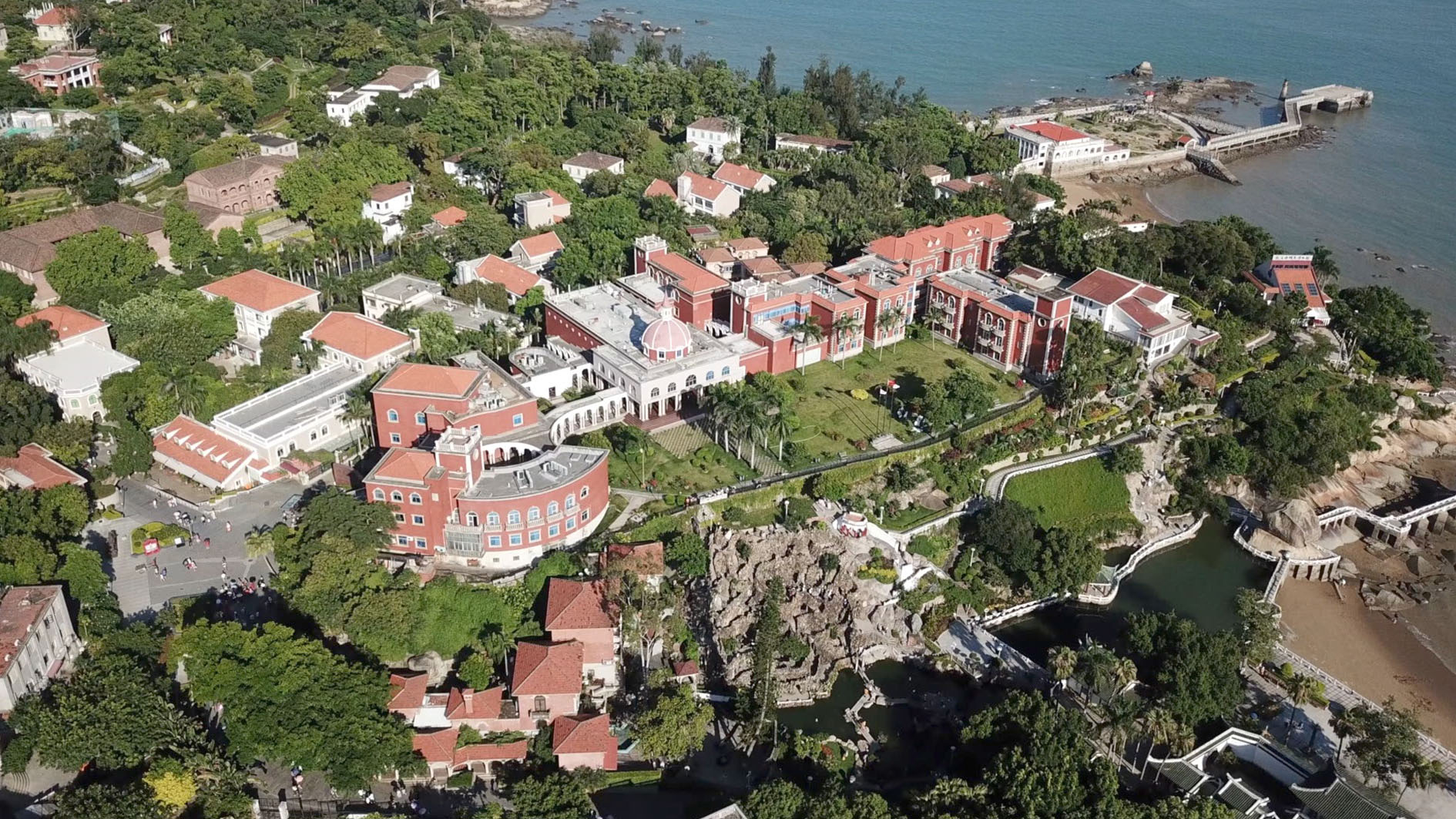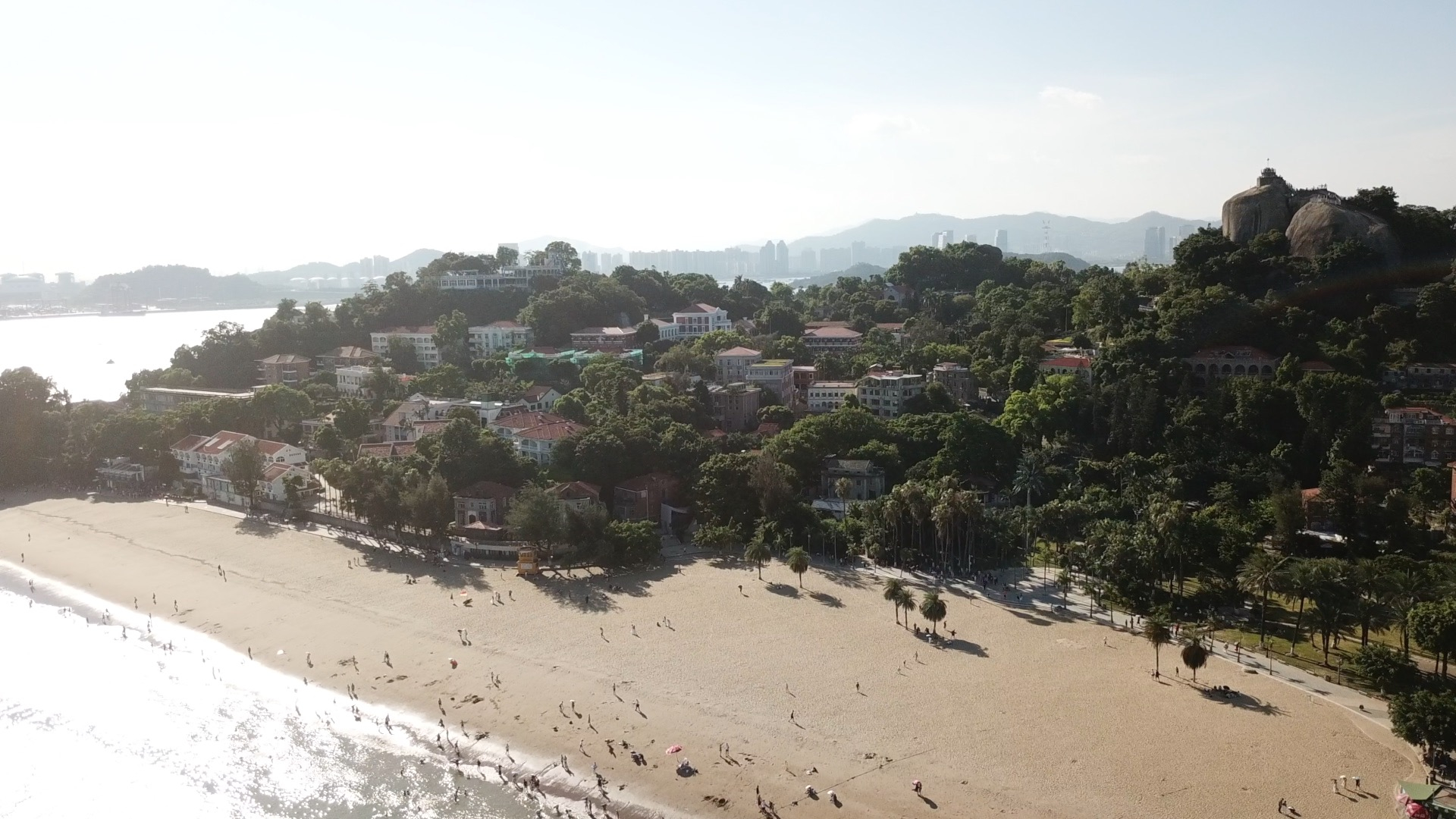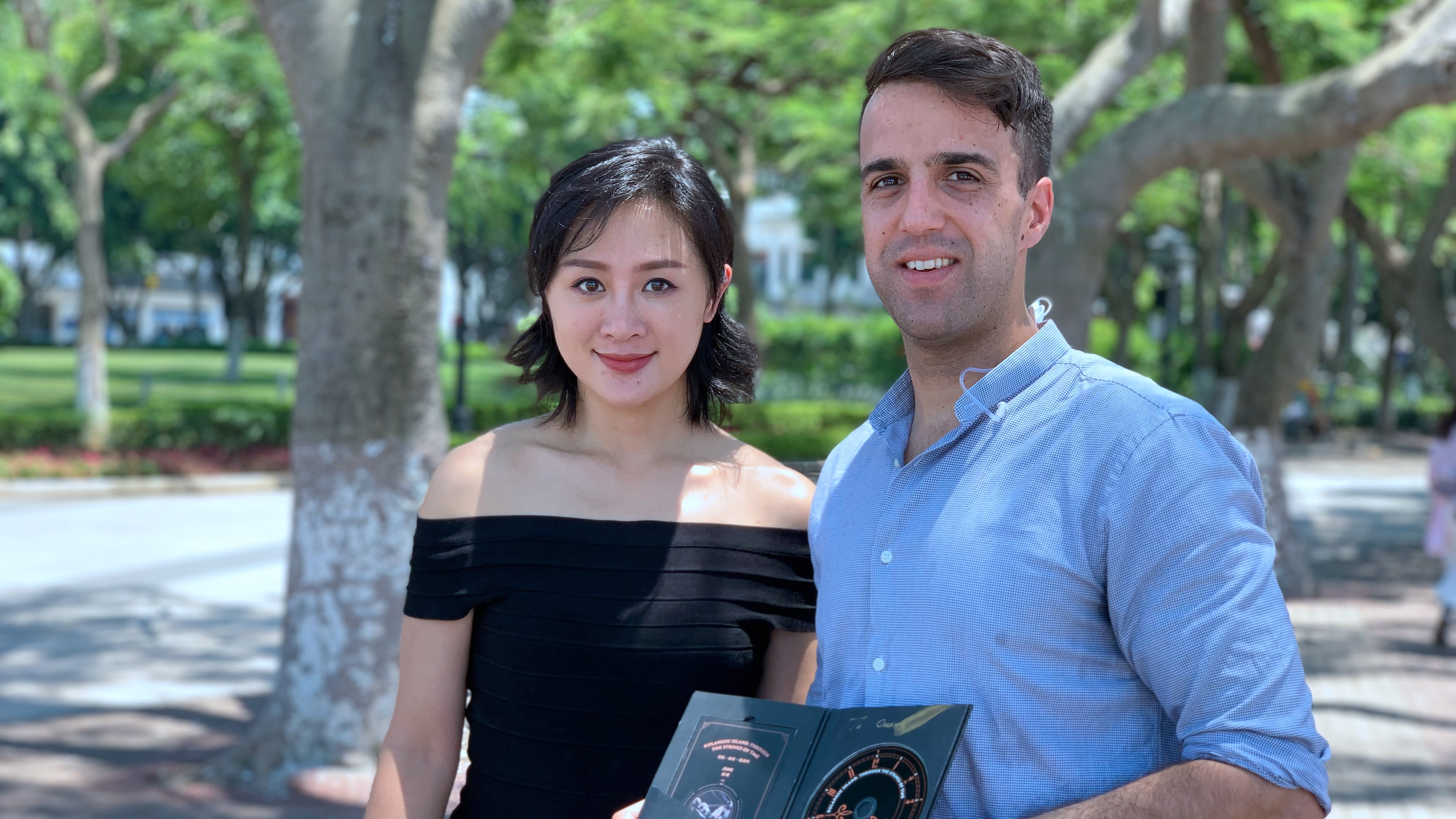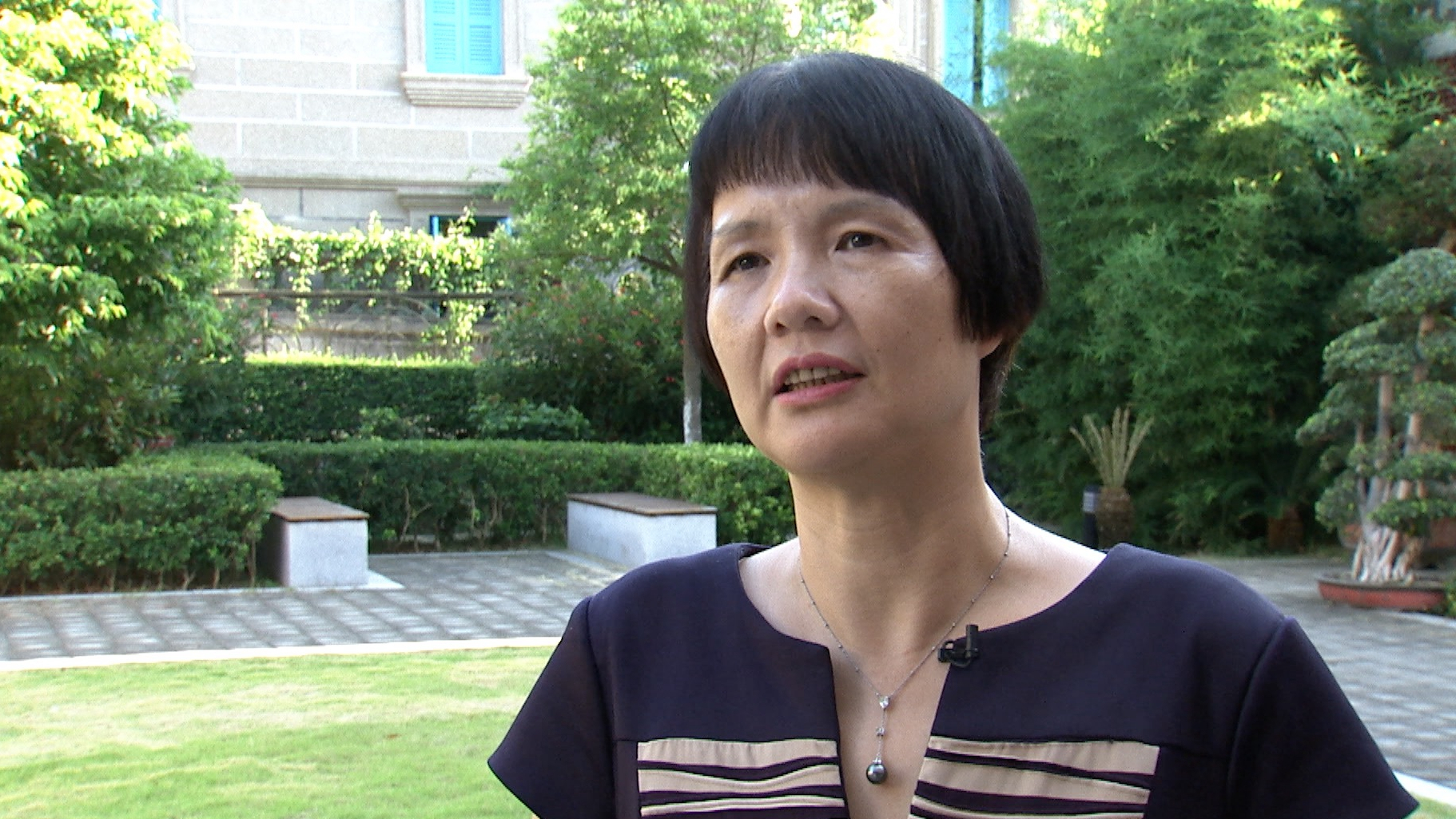

Reporter's Note: A picturesque island off the coast of Xiamen, Fujian Province, preserves tradition while opening its shores to millions of tourists.
Dong Qinong arrived on the island of Gulangyu in 1949, around the time the People's Republic of China was founded. The then two-year-old never imagined that his newfound home, an island of no more than two square kilometers, would go through such unique change over seven decades, he said.
Now a business owner of several restaurants and homestay-styled bed-and-breakfasts, he's also taken on the role of leading the Gulangyu Scenic Volunteers Association. As a group of local residents, they take it upon themselves to attempt to balance business growth alongside retaining the island's original design and ambiance.
Their mission is also carried out in tandem with the local government. "I'd say protecting the island is a duty we are bound to (do). We have a responsibility to preserve it, especially given Gulangyu's cultural context. The business climate here should be controlled as well. Some of the work we do is voluntary because as locals, it is upon us to love this island," said Dong.

Dong Qinong, chairman of the Gulangyu Scenic Volunteers Association. /CGTN Photo
The cultural context he alludes to reflects the island's deep and distinct history. Over the years, the island off the coast of Xiamen saw many traditions, cultures and even religious influences coming from the West.
Before the People's Republic of China was founded, Gulangyu saw several countries establish foreign outposts, missions and consulates on the island during the 19th century, dotting the island with European architectures and designs. Those growing up on the island thus had a blend of Chinese values with a fusion of international education.
Speeding up to today, the island, which belongs to southeast China's Fujian Province, has a greater commercial and tourist feel. For Dong, this is one of the biggest changes he has witnessed.
"Over the past few decades, the island has become more residential, becoming a national 5A scenic location (first) and then becoming a UNESCO World Heritage Site in 2017. Before, in 2003, there were less than one million tourists per year. Now that's gone up to an average of 10 million per year," he said, adding that finding a sustainable compromise between business and history is something that has been brought under control in recent years.

A scenic view of the Gulangyu. /CGTN Photo
"At one point in time, the business atmosphere was almost too strong; the island was overcrowded with people. Following a macro-control plan by the government, Gulangyu settled down. Now, laws and regulations allow the island to develop sustainably. The economy here heavily focuses on tourism," Dong said.
But given its heavy reliance on tourism, downfalls are inevitable. Dong explains that with many of the island's residents renting out shops, houses and land for commercial purposes, those without rental locations have little to no income, creating a disadvantaged or crowding-out effect. And despite just an eight-minute ferry ride from the highly-developed city center of Xiamen, nearly everything needs to be brought in by boat.
Gulangyu has been given many nicknames, most notably the Island of Music. Renowned artists, performers and musicians were born there, such as 5-string fusion violist Jing, one of the people that call Gulangyu home. Though she believes change is an inescapable process, she's proud of the efforts the island has made.

Jing (L), a 5-string fusion violist and Gulangyu local. /CGTN Photo
"Nothing is going to stay the same; every day is different. We're lucky to have a good government, they tried really hard and spent nine years to make the UNESCO listing. I was with them; I saw them checking the island piece by piece, checking every single building to see if it was okay. It's been really well taken care of," Jing said.
As for the local government, they have actively looked to find solutions and to create an environment that allows tourism, sustainability and preservation to co-exist.
"Business on the island has indeed been a controversial issue for people from all walks of life. Therefore, we've strengthened the management of business operations, formulating guidelines and prohibiting certain projects. For example, we encourage residents to open their old villas and showcase cultural exhibitions," said Zheng Yilin, the director of the Gulangyu Administrative Committee.

Zheng Yilin, director of the Gulangyu Administrative Committee. /CGTN Photo
Earlier this month, the island revised some of its policies on the protection of cultural heritage. Zheng said those policies had been elevated to comparatively meet international standards.
"We've revised and implemented regulations on protecting the cultural aspects and history of Gulangyu. These policies stand at the level of world cultural heritage, and from an international perspective, these policies are founded on international concepts. More attention is being paid to the people here and their communities," Zheng said.
At its prime, Gulangyu was once home to more than 1,200 villas, buildings and houses that were categorized as having European architecture and features, reflecting a colonial past. Now, that number has been shrinking to around 930. But even a small erosion of what Gulangyu once was doesn't phase long-time locals like Dong Qinong.
"I am full of confidence and hope when it comes to Gulangyu. The island will develop in an orderly way in the future. I am confident this island will be protected, and that it will leave a good impression on visitors from all around the world."

Copyright © 2018 CGTN. Beijing ICP prepared NO.16065310-3
Copyright © 2018 CGTN. Beijing ICP prepared NO.16065310-3